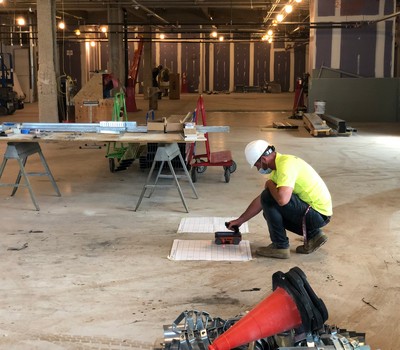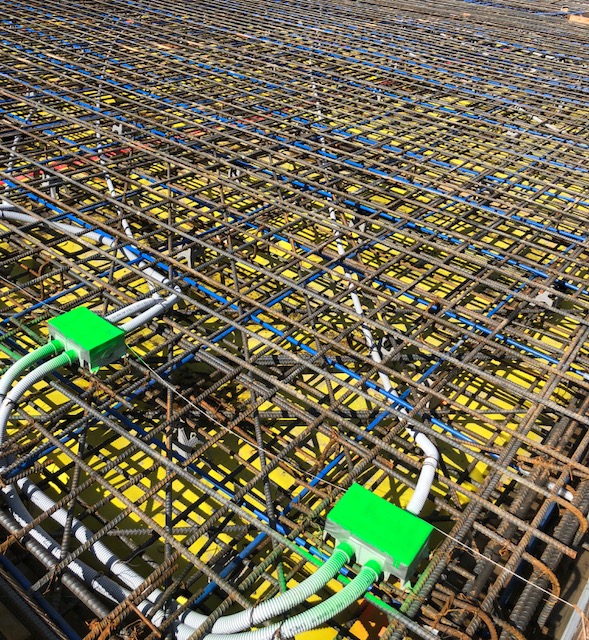Discovering the Midst: A Comprehensive Guide to Concrete Scanning and Its Diverse Applications
In the world of construction and framework growth, the thorough procedure of concrete scanning holds a pivotal role in guaranteeing the architectural honesty and security of jobs. As modern technology proceeds to advance, the applications of concrete scanning have actually expanded far beyond mere surface-level assessments. From detecting rebar and post-tension cords to mapping out conduits and gaps hidden within concrete frameworks, the capabilities of modern scanning techniques are both vital and impressive. The real deepness of concrete scanning's potential reaches also further, branching right into unanticipated industries and triggering innovative solutions. The interconnected web of opportunities that concrete scanning presents is not only remarkable however also vital for the advancement of numerous sectors.
Value of Concrete Scanning
Comprehending the importance of concrete scanning is essential in ensuring the safety and honesty of frameworks throughout building and renovation projects. Concrete scanning makes use of innovative innovations such as ground-penetrating radar (GPR) and electromagnetic induction to spot ingrained items, voids, or other anomalies within concrete structures - RainierGPR Concrete Scanning. By performing detailed scans prior to exploration, cutting, or coring right into concrete, building teams can avoid accidental damage to essential structural components like rebar, conduits, or post-tension cords. This positive technique not only protects against pricey repair work and project delays but also boosts overall building and construction safety and security by alleviating the danger of structural failings or collapses as a result of endangered integrity.
Furthermore, concrete scanning plays a crucial role in guaranteeing compliance with building regulations and laws that mandate the security of existing structural components throughout building tasks. By precisely drawing up the internal make-up of concrete, scanning modern technologies enable construction professionals to make enlightened choices that maintain the architectural stability and longevity of buildings and infrastructure tasks. In essence, the importance of concrete scanning hinges on its ability to protect both the structural integrity and the personnel entailed in building endeavors.
Technologies Used in Concrete Scanning
Concrete scanning counts on innovative technologies such as ground-penetrating radar (GPR) and electromagnetic induction to accurately identify embedded objects and abnormalities within concrete structures. Ground-penetrating radar runs by discharging high-frequency electro-magnetic waves into the concrete. When these waves encounter various materials or spaces within the concrete, they recover to the surface area, enabling the GPR system to create a thorough subsurface image. This modern technology is especially reliable in locating rebar, post-tension wires, channels, and various other things installed in concrete.
Electromagnetic induction, on the various other hand, works by generating magnetic fields around a concrete structure with a transmitter coil. When steel things exist within the concrete, they disrupt these electro-magnetic areas, causing eddy currents to move via the metal. By measuring the changes in the electromagnetic fields with a receiver coil, the system can determine the area of metal items in the concrete.
These sophisticated modern technologies play a crucial role in non-destructive screening, guaranteeing the safety and stability of concrete structures in different industries.
Applications in Building Market
Within the construction sector, concrete scanning innovation discovers diverse applications that enhance project performance and security. Additionally, concrete scanning is made use of for situating gaps, such as air pockets or areas of degeneration within concrete, which can jeopardize the overall stamina of a structure. Concrete scanning plays a crucial duty in quality control by confirming the thickness of concrete covers over support, ensuring compliance with style specs and requirements.

Security Benefits of Concrete Scanning
In the world of construction safety, the execution of concrete scanning innovation presents a paramount benefit in preemptively determining prospective hazards and fortifying structural honesty. By using sophisticated scanning techniques such as ground-penetrating radar (GPR) and electro-magnetic induction, building teams can precisely situate rebar, post-tension cable televisions, avenues, and various other concealed objects within concrete frameworks. This positive strategy considerably lowers the threat of unintended strikes throughout boring, cutting, or coring tasks, thus avoiding pricey damages, injuries, and project hold-ups.
Moreover, concrete scanning boosts worker safety and security by giving real-time details concerning the architectural problem of concrete elements. This information allows building and construction professionals learn the facts here now to analyze the integrity of existing structures, determine wear and tear or issues, and make our website informed decisions concerning fixing and maintenance treatments. By attending to potential safety and security concerns quickly, concrete scanning contributes to developing a protected workplace and reducing the possibility of structural failings or crashes on building sites. Inevitably, the security advantages of concrete scanning not just guard lives and assets but likewise support industry criteria for high quality and dependability.
Future Fads in Concrete Scanning
Arising innovations in scanning modern technology are poised to transform the area of concrete assessment and analysis. By utilizing the power of AI, these systems can evaluate huge amounts of data gathered throughout scanning processes to offer even more precise and comprehensive understandings right into the condition of concrete frameworks.
Another substantial pattern is the growth of more portable and easy to use scanning gadgets. Miniaturization of scanning equipment enables for much easier access to confined rooms and remote places, making inspections much more detailed and effective. Furthermore, improvements in wireless interaction modern technologies allow real-time information transfer and analysis, facilitating quicker decision-making procedures.
In addition, there is a growing concentrate on sustainability in concrete scanning modern technologies - RainierGPR Concrete Scanning. Suppliers are progressively including green materials and energy-efficient attributes right into their tools to minimize ecological impact. These future fads are readied to boost the performance, accuracy, and sustainability of concrete scanning techniques, forming the sector's future landscape
Verdict
To conclude, concrete scanning plays a critical duty in the building and construction sector by making certain the safety and effectiveness of various jobs. By using advanced modern technologies, such as GPR and radar imaging, professionals have the ability to precisely spot potential risks within concrete structures. The applications of concrete scanning are large and proceed to advance, making it an essential tool for preserving the integrity of buildings and facilities. As innovation breakthroughs, the future of concrete scanning holds promising developments for enhancing building processes.
